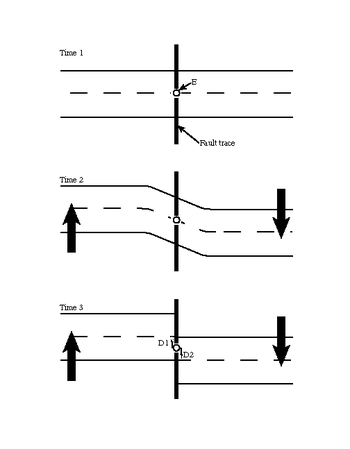
Back Théorie du rebond élastique French תאוריית הקפיצה האלסטית החוזרת HE Առաձգական վերադարձի տեսություն Armenian Teoria del rimbalzo elastico Italian 弾性反発説 Japanese 탄성반발설 Korean 彈性回跳理論 Chinese

Elastic rebound
In geology, the elastic-rebound theory is an explanation for how energy is released during an earthquake.
As the Earth's crust deforms, the rocks which span the opposing sides of a fault are subjected to shear stress. Slowly they deform, until their internal rigidity is exceeded. Then they separate with a rupture along the fault; the sudden movement releases accumulated energy, and the rocks snap back almost to their original shape. The previously solid mass is divided between the two slowly moving plates, the energy released through the surroundings in a seismic wave.
© MMXXIII Rich X Search. We shall prevail. All rights reserved. Rich X Search